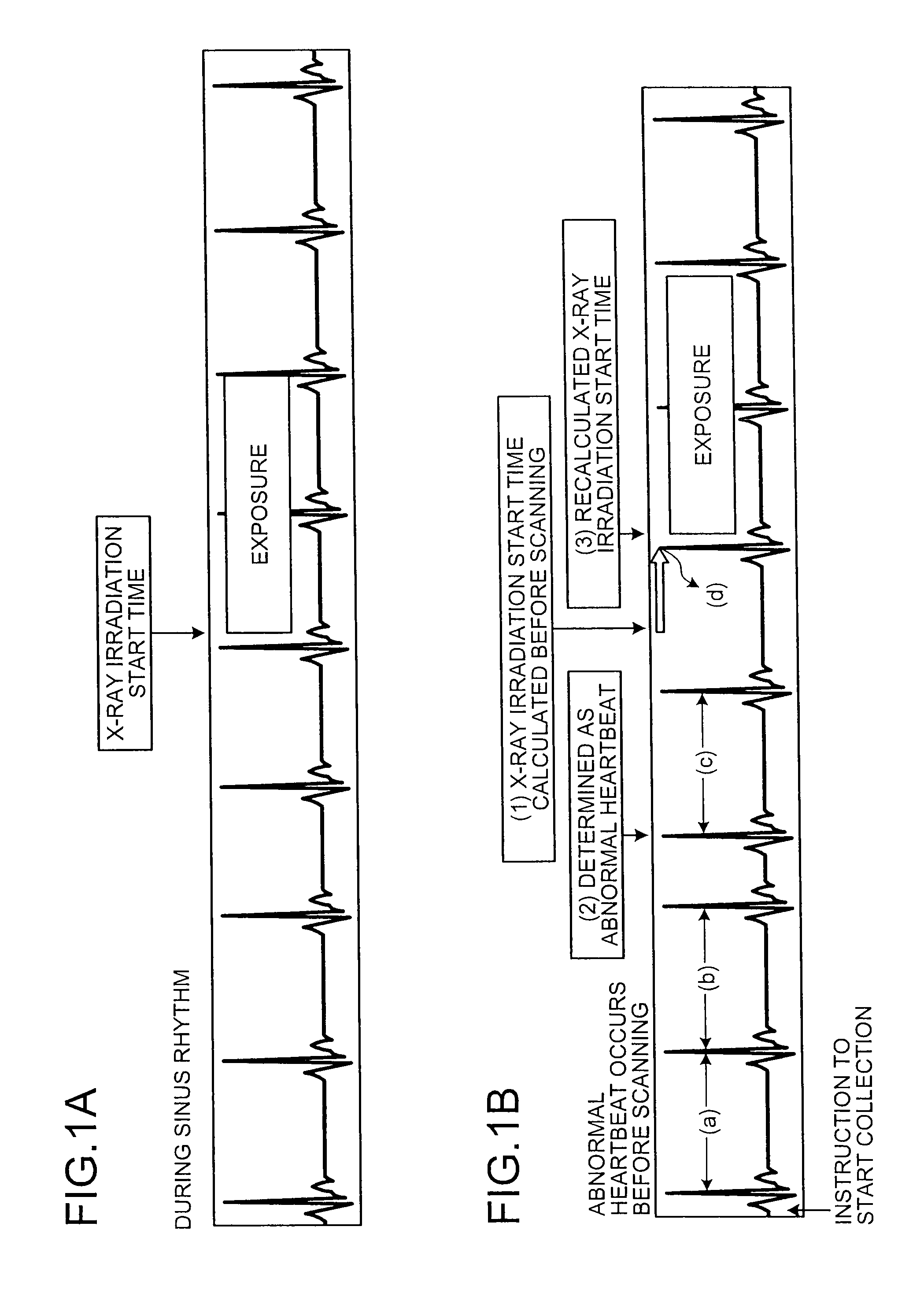X-ray computed tomography apparatus and tomographic method
a computed tomography and computed tomography technology, applied in tomography, applications, instruments, etc., can solve the problems of insufficient x-ray intensity distribution data required for reconstructing a heart tomographic image, image cannot be reconstructed in the expected temporal resolution, and scan schedule cannot be changed
- Summary
- Abstract
- Description
- Claims
- Application Information
AI Technical Summary
Benefits of technology
Problems solved by technology
Method used
Image
Examples
first embodiment
Outline and Features of X-ray CT Apparatus
[0027]First of all, main features of an X-ray CT apparatus according to a first embodiment of the present invention are specifically explained below with reference to FIGS. 1A, 1B and 2. FIGS. 1A and 1B are schematic diagrams for explaining an outline and feature of the X-ray CT apparatus according to the first embodiment, and FIG. 2 is a schematic diagram for explaining features of the X-ray CT apparatus according to the first embodiment.
[0028]The X-ray CT apparatus according to the first embodiment is configured to start tomographic scanning that includes irradiating with X-rays a subject attached with an electrocardiograph, detecting X-rays passed through the subject, and reconstructing a heart tomographic image of the subject based on X-ray intensity distribution data that is information about the detected X-rays, in accordance with a scanning start time obtained from an electrocardiographic waveform acquired from the electrocardiograph....
second embodiment
Outline and Features of X-Ray CT Apparatus
[0096]First of all, main features of an X-ray CT apparatus according to a second embodiment of the present invention are specifically explained below with reference to FIGS. 5A, 5B, 6A and 6B. FIGS. 5A and 5B are schematic diagrams for explaining an outline of the X-ray CT apparatus according to the second embodiment, and FIGS. 6A and 6B are schematic diagrams for explaining features of the X-ray CT apparatus according to the second embodiment.
[0097]The X-ray CT apparatus according to the second embodiment is configured to collect X-ray intensity distribution data within a certain collection period obtained from an electrocardiographic waveform acquired from an electrocardiograph, during tomographic scanning that includes irradiating with X-rays a subject attached with the electrocardiograph, detecting X-rays passed through the subject, and reconstructing a heart tomographic image of the subject based on detected X-ray intensity distribution...
PUM
 Login to View More
Login to View More Abstract
Description
Claims
Application Information
 Login to View More
Login to View More - R&D
- Intellectual Property
- Life Sciences
- Materials
- Tech Scout
- Unparalleled Data Quality
- Higher Quality Content
- 60% Fewer Hallucinations
Browse by: Latest US Patents, China's latest patents, Technical Efficacy Thesaurus, Application Domain, Technology Topic, Popular Technical Reports.
© 2025 PatSnap. All rights reserved.Legal|Privacy policy|Modern Slavery Act Transparency Statement|Sitemap|About US| Contact US: help@patsnap.com



